It’s an election year, folks, and that means it’s time to cast your vote for the 2024 Pollinator Plant of the Year. This year’s candidates are two underappreciated annuals, one pinkish-purple, the other yellow, as follows.
Clammyweed, Polanisia dodecandra
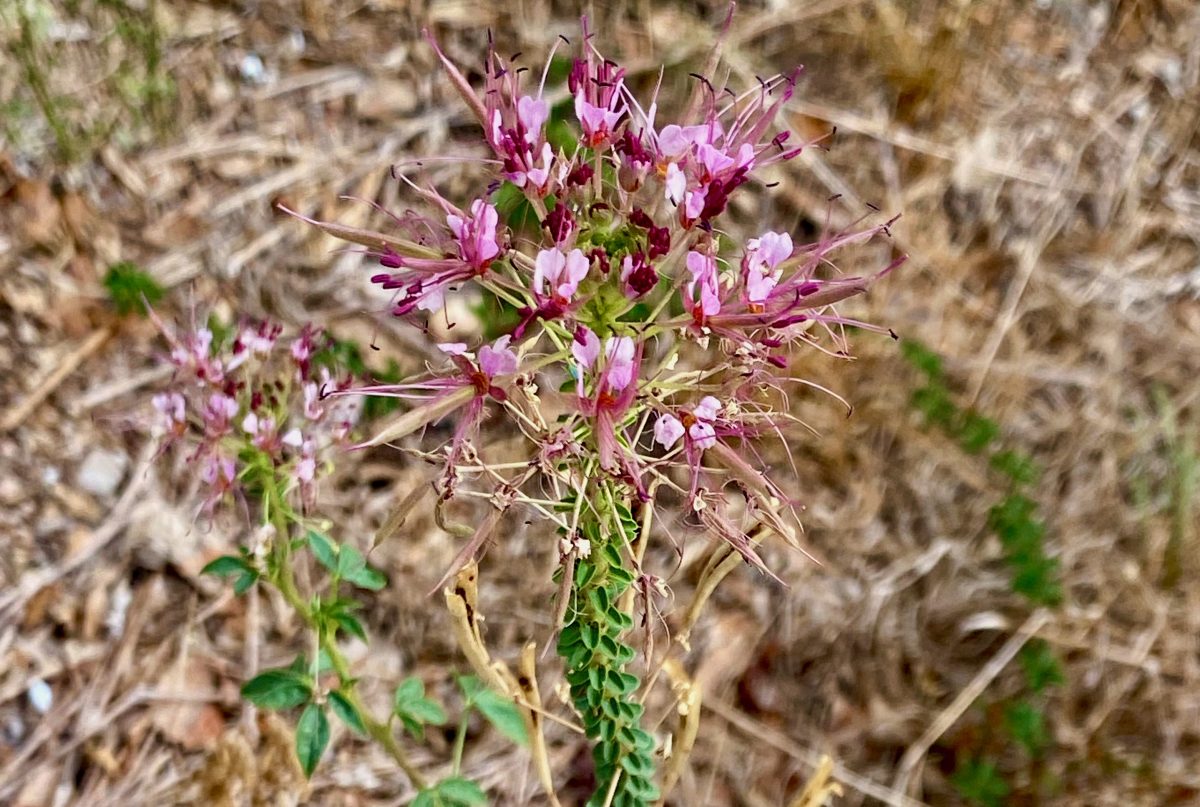
Clammyweed –Photo by Monika Maeckle
Partridge Pea, Chamaecrista fasciculata
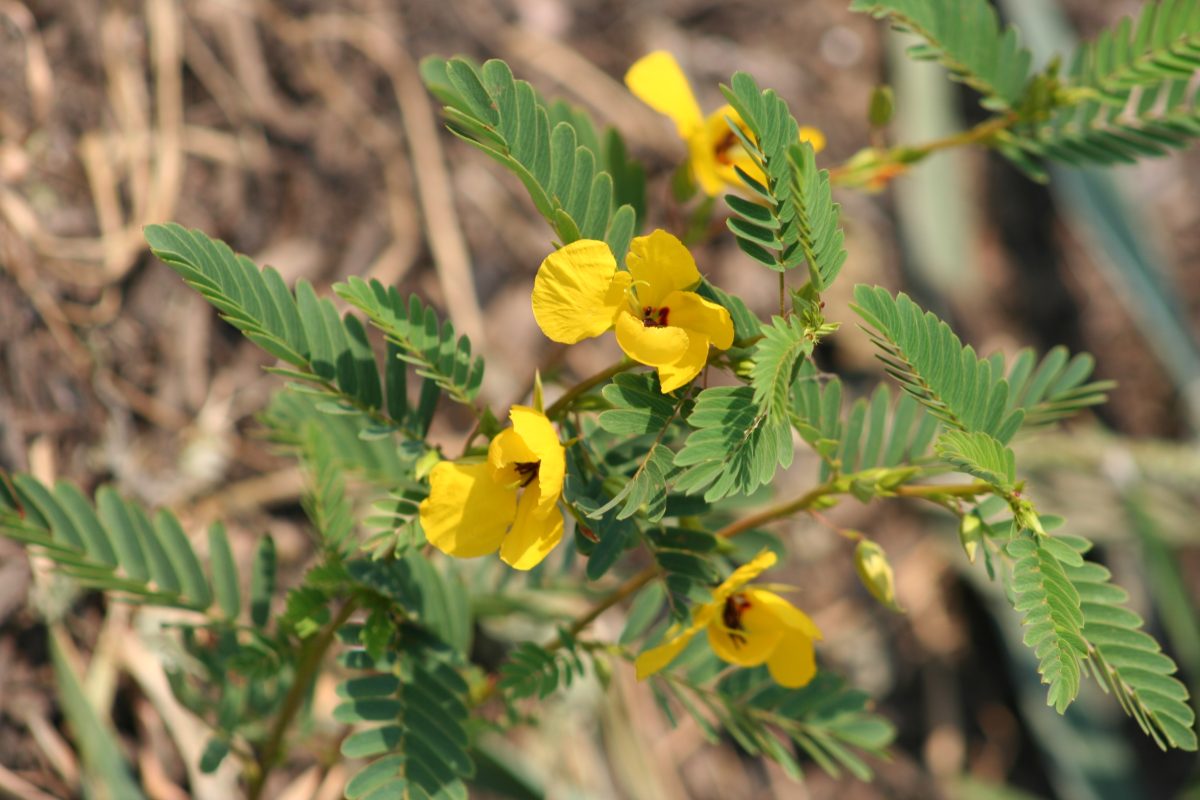
Partridge Pea — Photo by Lee Marlowe
These worthy candidates follow in the footsteps of previous winners, Cowpen daisy (2019), Gregg’s purple mistflower (2020), Frostweed (2021), Gayfeather (2022), and Mealy Blue Sage (2023).
Started in 2019 by the Texas Butterfly Ranch, Unofficial Pollinator Plant of the Year campaign aims to raise awareness of the unsung plant heroes of the pollinator garden. Many worthy, native plants are frequently unavailable and ONLY found at seasonal pop-up plant sales. Some are only found in the wild. If you miss these occasional plant sales or spotting these plant gems in the wildscape, you’re out of luck.
Commercial and retail nurseries cite “lack of demand” as the reason these plants are absent from their stores. They also cite some natives’ persnickety growth habits and the fact that it can take two years for some plants to reach a mature enough stage to warrant customer interest.
That said, the goal of our Unofficial Pollinator Plant of the Year is to drive demand for more native plants at gardening centers, local nurseries and big box stores. We encourage you to request these plants when shopping to stock your landscape.
But first, please vote.
“Once again, we’re faced with two great choices,”said Lee Marlowe, president of San Antonio’s chapter of the Native Plant Society of Texas. “Either one of these amazing annuals will make a great addition to your landscape.” She added that since both plants are annuals, letting them go to seed each year will ensure they come back the following year.
The nominees are….
Clammyweed, Polanisia dodecandra
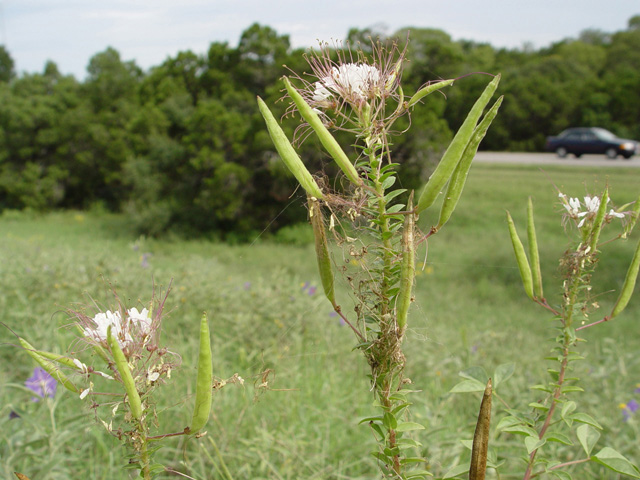
Clammyweed, Photo by Melody Lytle via Lady Bird Johnson Wildflower Center
Clammyweed boasts a huge tolerance for lack of attention. During last year’s extreme drought and heat, it was one of very few flowering plants visible in August and September, earning it a slot as a a 2024 candidate.
Sometimes called Redwhisker Clammyweed because of the fluffy, pinkish hairs extruding from its head, Clammyweed is a warm season annual forb that grows in most soils throughout much of Texas. It can reach 3’ in height. Its showy pinkish-purplish flowers provide nectar for butterflies in the most extreme days of summer. According to DK Seeds, “In one trial near Kingsville, Texas, over 50 butterfly species were documented as utilizing the species during summer.” Clammyweed also works as a host plant to the Cabbage White, Checkered White and Great Southern White butterflies.
The plant’s distinctive, strong smell and sticky moistness of the glandular hairs that cover its stems offer the bonus of making it unappealing to deer and livestock. Birds, doves, turkey and quail utilize its seed as a protein source.
Partridge Pea, Chamaecrista fasciculata
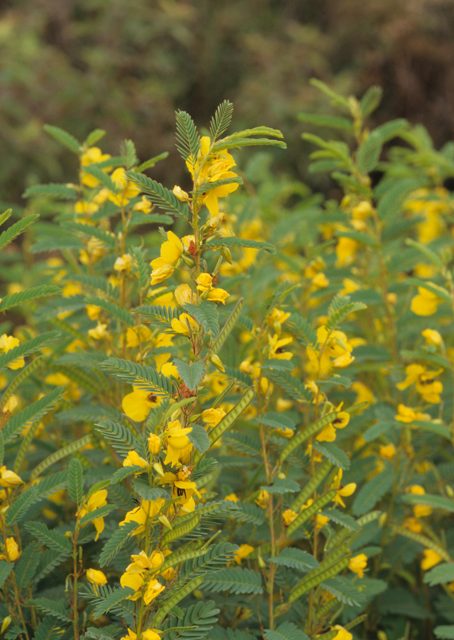
Partridge Pea, Photo courtesy Wasowski, Sally and Andy/Lady Bird Johnson Wildflower Center
This yellow-blooming legume also boasts low maintenance and high service to wildlife. It grows in 1 -3 feet tall in most soils, in sun and partial shade, and requires dry – medium moisture. Its alluring flowers have yellow anthers that produce reproductive pollen, and purple anthers that produce food pollen, making it a favorite of myriad bee species and important honey plant.
Interestingly, Partridge Pea does not produce a lot of nectar. Instead, it has extra floral nectaries, tiny cups of nectar that draw sugar loving ants and wasps. It does serve butterflies as a host plant to the Cloudless giant sulphur, Orange sulphur, and Sleepy orange butterflies, which lay their eggs on its “sensitive” foliage.
Sometimes called Sensitive plant, Partridge Pea responds to physical contact. Its leaves will usually recoil when touched. The plant is also sensitive to daylight and will fold its leaflets late in the day as the sun begins to set.
As a legume, Partridge Pea offers the added benefit of working as a nitrogen fixer, meaning its roots transfer nutrients back into the soil. The narrow, flat, green seed pods turn brown in the fall, bust open on both sides, and expel the seeds that game birds devour.
So…a difficult choice, but what do you say? Please vote here.
We’ll report results in early February.
TOP PHOTO: Courtesy Ladybird Johnson Wildflower Center
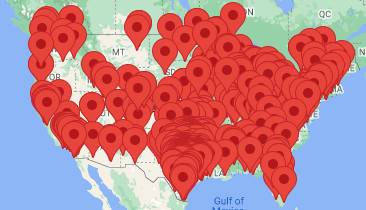
Get on the map with 1,097 other gardeners by signing up for our pollinator habitat challenge HERE.
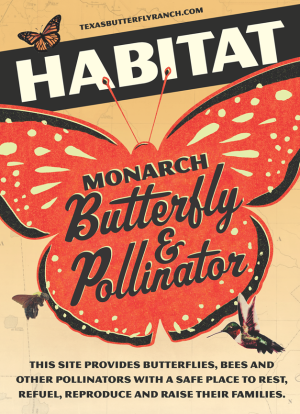
Let your neighbors or HOA know why your pollinator garden looks the way it does–get a pollinator habitat sign that announces your intentionality.
Related articles:
- Past “Unofficial” Pollinator Plants of the Year
- Mostly native urban pollinator garden outperforms lawn every time
- Flower “bed” works overtime as bachelor pad for solitary bees
- Trinational friendship garden woos pollinators and their fans to Confluence Park
- Doug Tallamy proposes crowdsourcing a homegrown national park: Who’s in?
Like what you’re reading? Don’t miss a single article from the Texas Butterfly Ranch. Sign up for email delivery at the bottom of this page, like us on Facebook, follow us on Twitter, @monikam or on Instagram.

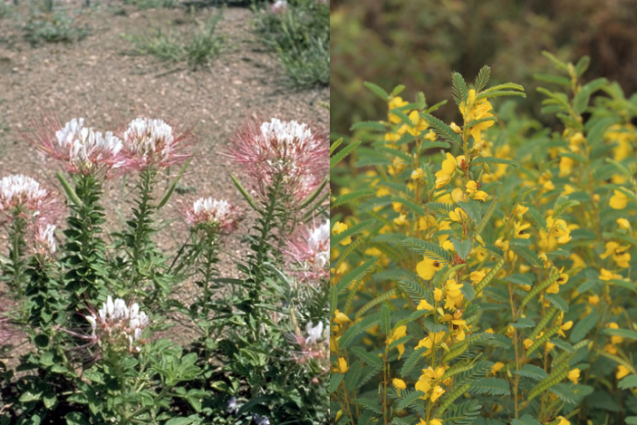

Clammyweed was the traffic stopper/conversation starter in a fall tour of my garden. Clammyweed by a mile!
Oh my gosh. Both superb pollinator plants and I see them on my walks in the neighborhood even during the heat. Still, I am voting for partridge pea because I ALWAYS see bumblebees on the flowers. Their fav and mine, too.